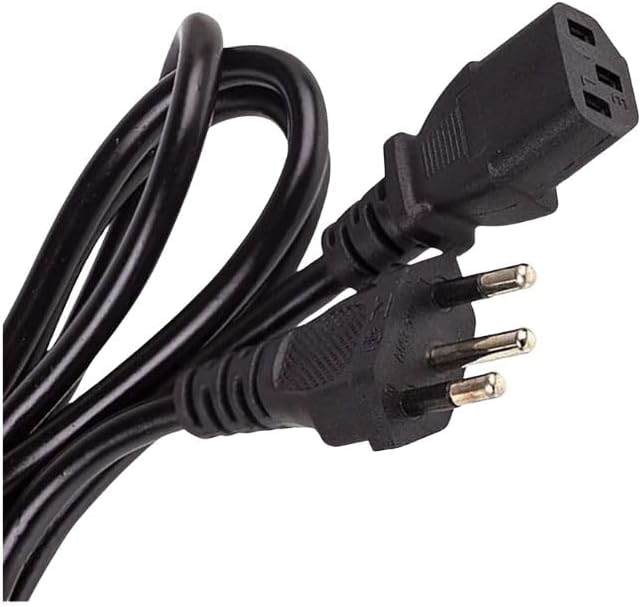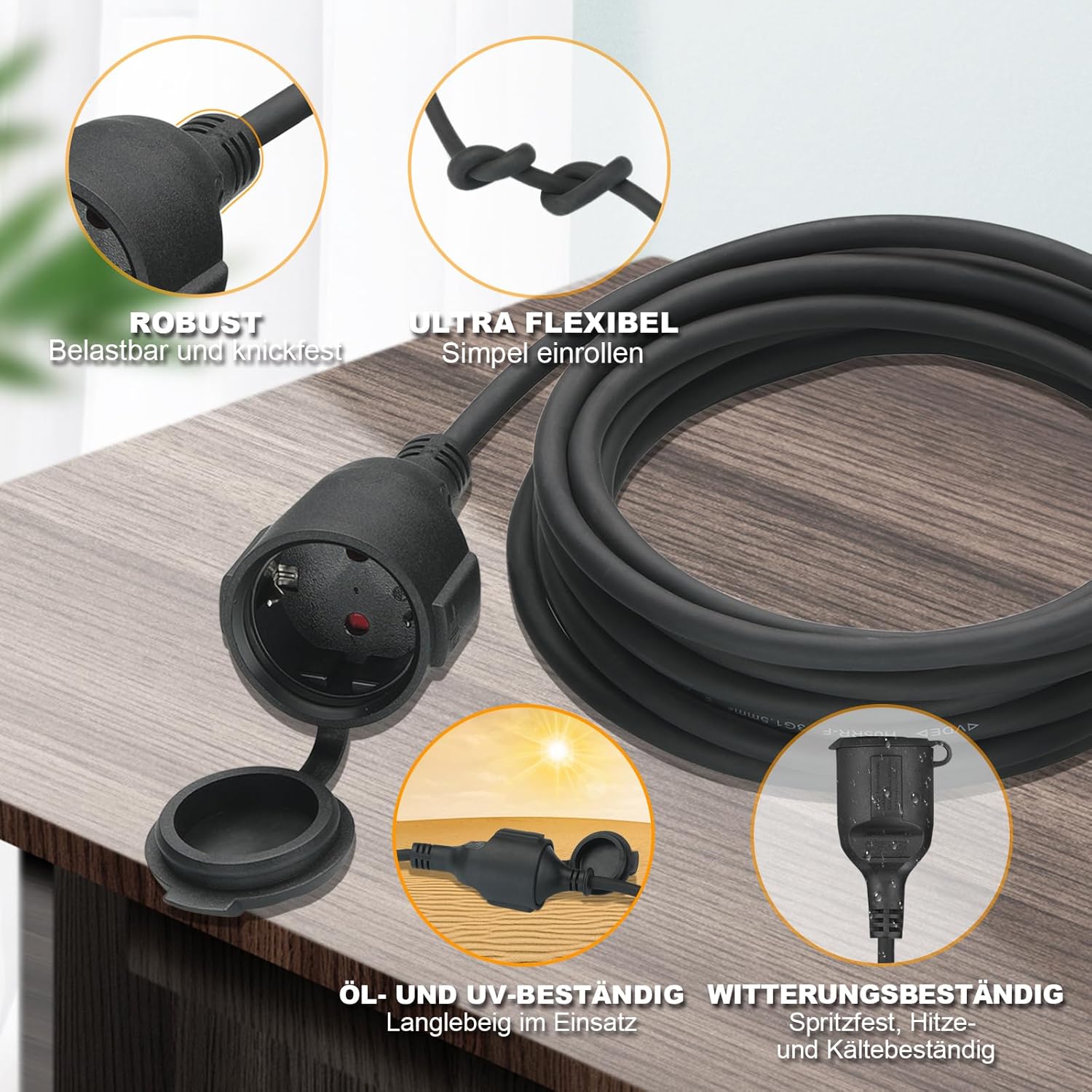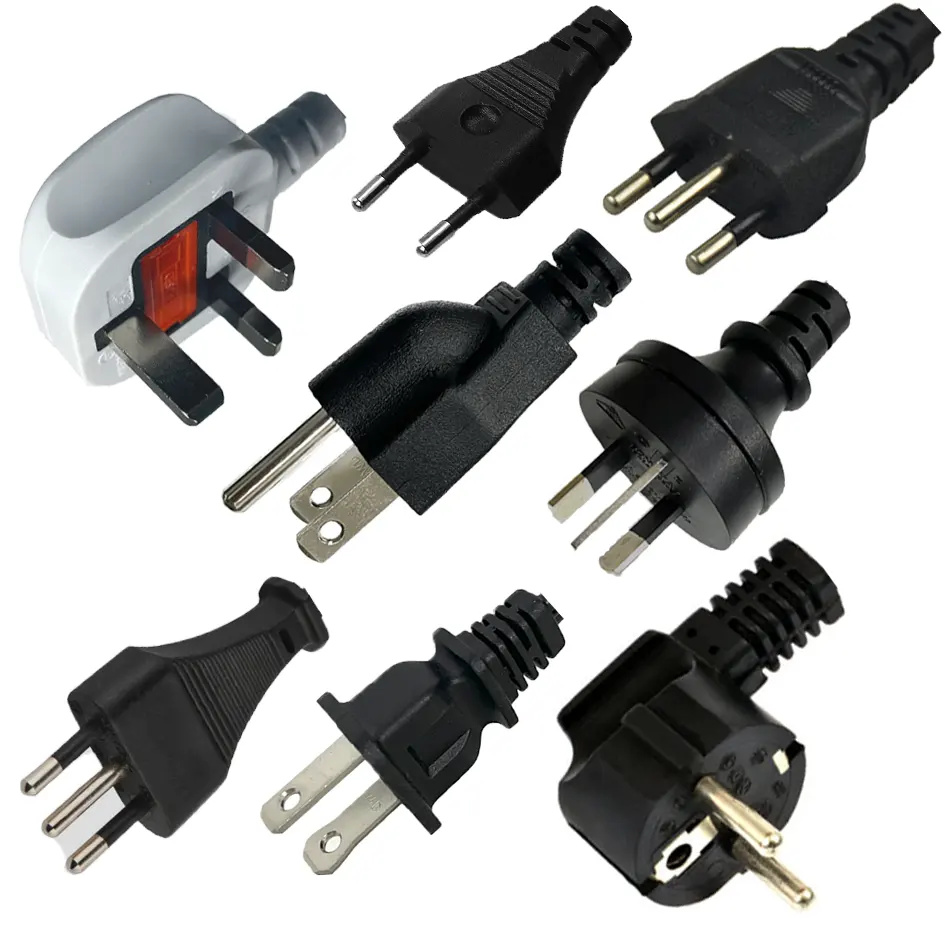In daily electrical usage and device operation, power cords are often the most overlooked aspect. Many people think that as long as they can power on, they’re fine. However, choosing the wrong cable not only wastes energy but can also damage equipment and even cause fires. This article will help you understand the scientific principles of power cord selection and avoid common misconceptions.
Why is power cord selection so important?
Safety Risks: Thin wires carrying high currents for extended periods can easily overheat, and aging insulation can cause short circuits and fires.
Performance Impacts: Wires that are too thin or too long can cause voltage drops, leading to unstable device operation.
Economic Costs: Poor-quality or inappropriate cables not only reduce efficiency but also increase energy consumption and maintenance costs.
Core Principle: Matching Wire Diameter to Current
The key to determining whether a power cord is suitable lies in whether the wire diameter (cross-sectional area) matches the current draw.
Trick: The higher the current, the thicker the cable!
Copper Wire Ampacity Quick Reference Table (Safety Reference Values)
1A Current → ≥ 0.5mm² (AWG20)
5A Current → ≥ 1.5mm² (AWG16)
10A Current → ≥ 2.5mm² (AWG12)
Tip: For long-term full-load operation, it is recommended to increase the wire diameter by one size for greater safety.
3 Common Wire Selection Mistakes
Using Thin Wire for High Currents
Many people think this is “temporarily safe,” but in reality, the wire will gradually heat up, the insulation will degrade, and eventually a short circuit or fire may occur.
Not Considering Wire Length
The longer the wire, the greater the voltage drop. Ignoring this, equipment may experience undervoltage and frequent shutdowns.
Using Aluminum Wire for Cheapness
Aluminum wire is inexpensive, but it has high resistance, is easily oxidized, generates significant heat, and has poor efficiency, making it unsuitable for long-term use.
Practical Wire Selection Tips
1. Adjust wire diameter based on length
≤ 5 meters → Select according to standard
5–10 meters → Increase wire diameter by one step
> 10 meters → Increase wire diameter by two steps and calculate voltage drop
2. Quickly calculate voltage drop
Voltage drop (V) = Current (A) × Wire resistance (Ω)
Example: 10A current, 2.5mm² copper wire (0.007Ω/m), 5 meters long
Voltage drop = 10 × (0.007 × 5 × 2) = 0.7V
(Note: The round trip current needs to be calculated by ×2)
3. Derating is required for high temperature environments
When the ambient temperature is >30°C, it is recommended to reduce the wire current carrying capacity by 20% to ensure safety.
Simple Test Tips
If you’re unsure whether you’ve selected the right cable, here’s a quick test:
Run the device at full load for 30 minutes.
Touch the power cord:
Slightly warm (approximately 40°C) → Generally acceptable
Clearly hot (>60°C) → Replace with a thicker cable.
Summary
The power cord may seem insignificant, but it’s crucial to safety, efficiency, and device lifespan. The principles for selecting cables wisely are:
The greater the current, the thicker the wire.
The longer the cable, the thicker it should be.
Prefer copper wire over aluminum.
In practice, selecting cables based on current, length, and ambient temperature ensures safe, stable, and efficient device operation.
Frequently Asked Questions (FAQs)
1. What is the common wire diameter for power cords used in household appliances?
Low-power household appliances (such as rice cookers and electric fans) typically use copper wire with a diameter of 0.75mm²–1.0mm².
High-power appliances (such as air conditioners and electric water heaters) typically require copper wire with a diameter of 2.5mm²–4.0mm² for safety.
2. What is the difference between copper and aluminum wire?
Copper wire: Excellent conductivity, low resistance, durability, and increased safety.
Aluminum wire: Inexpensive, but with high resistance, prone to oxidation, and high heat generation, it can pose a safety hazard.
👉 Therefore, pure copper power cords are recommended for both household and industrial applications.
3. How can I tell if a power cord is overheating?
Touch it after 30 minutes of operation:
Warm (approximately 40°C) → Normal
Hot (over 60°C) → Risky, replace with a thicker power cord.
4. Does cable length affect voltage?
Yes. The longer the power cable, the greater the resistance, which can easily cause voltage drop and lead to insufficient power to the device.
Recommendation:
5–10 meters → Increase the cable diameter by one level.
Over 10 meters → Increase the cable diameter by two levels and calculate the voltage drop.
5. What is voltage drop in a power cable?
Voltage drop = current × resistance.
When a power cable is too long or too small, voltage drop can cause the actual voltage received by the device to be lower than the rated voltage, affecting performance or even damaging the device.
6. What certifications should I consider when choosing a power cable?
Different countries and regions have different power cord safety certifications:
US: UL, ETL
Europe: VDE, CE
Australia: SAA
China: CCC
Choosing a certified power cable ensures compliance with local safety standards and facilitates market approval.
📢 Summary
When choosing a power cord, consider not only the current and wire diameter, but also the length, ambient temperature, and certification standards.
Choosing the right power cord ensures safety, energy savings, and device longevity.




